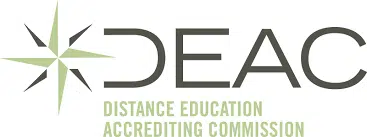How To Make A Needs Analysis Questionnaire For ESL Students
Join a global community of over 200,000 TEFL teachers working throughout the world! Enrol me!
More and more emphasis is being placed on the student-centred classroom, and for good reason. The students and their needs should be the focus of the classroom and this should be reflected in the content and style of the lessons and activities. In other words, it is vital to find out what your students need in order to plan appropriate and relevant lessons specifically for them.
Creating a needs analysis is the first step to finding out exactly what your students need. A needs analysis is a useful tool for finding out a whole range of information which will help inform your decisions related to the class. A needs analysis can be carried out simply through a questionnaire, using written prompts for a written exercise or a class discussion. However it is done, though, it needs to include certain information.

Needs analysis Part 1: Autobiographical information: Nationality, age, occupation
This information will show you the range of your class in terms of age, but will also help you to tailor content which will be relevant to certain professions or cultures. This is especially important when it comes to religious considerations.
Needs analysis Part 2: Motivating factors: Reasons for learning English
The reasons for learning English will help you understand your learners more and help you understand where their motivation is coming from. In this way you will realise if it is necessary to introduce extra motivational aspects into your lessons. The motivation will also reflect exactly what your students want to learn.
Read more: How to Promote Motivation in the EFL Classroom
Needs analysis Part 3: Educational background: Previous English learning experience
This is to help you understand your learners as learners. If they are not accustomed to the TEFL style of teaching but come from a more traditional background, it may be necessary to explain your methods or spend some time focussing explicitly on the theory behind your classroom activities.

Needs analysis Part 4: Preferred learning method: Learner style, likes and dislikes in the classroom
Finding out the learner styles of your class will inform decisions relating to classroom activities. Usually there are a range of learner styles which means you will need to incorporate activities to include all types of learners. The same goes for likes and dislikes, but if you find that nobody likes a particular activity, make sure you remember that!
Needs analysis Part 5: English skills: Best and worst skills
If, for example, the whole class has very good listening skills and are more focussed on reading and writing to prepare them for an academic context, then there is no need to spend unnecessary time on listening skills.

Needs analysis Part 6: Usefulness: What English is needed in terms of real-world activities
The English covered in the classroom should be a reflection of what your students will be using in the real world. If they need to interact with people on the phone, this is what should be happening in the classroom.
Needs analysis Part 7: Content: Any specific English specialisation
If students are not looking at improving their English in a general sense, they may have very specific needs in terms of what English they need to learn. This can be anything from Business English to Aviation English to Nursing English or even just Academic English.
Read more: What is English for Specific Purposes and How Do I Teach It?
Doing a needs analysis is definitely a necessary part of any introductory lesson. With older learners and adults it can easily be done as they are aware of their needs and their strengths and weaknesses, but with young learners you will need to come up with an activity, game or worksheet which will give you the information you need.

Comments:
Accreditation Partners
The TEFL Academy was the world’s first TEFL course provider to receive official recognition from government regulated awarding bodies in both the USA and UK. This means when you graduate you’ll hold a globally recognised Level 3 (120hr) Certificate or Level 5 (168hr) Diploma, meaning you can find work anywhere and apply for jobs immediately.
 United States
US
United States
US













Dear Sir/Mme,
I was wondering if you could help me by sending me 2 sample questionnaires (word doc version) that I can use to assess my students’ needs/wants in English so that I can develop supplementary materials.
– Questionnaire One/ to learners who have been studying English for 3 years ( ‘A’ level, CEFR)
– Questionnaire Two/ to learners who have been studying English for 3 years ( ‘A+’ level, CEFR)
Best Regards.
Mohamed (EFL teacher),Tunisia